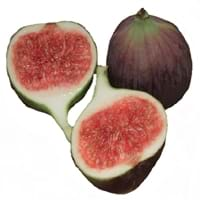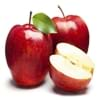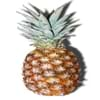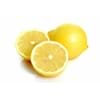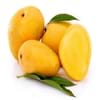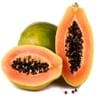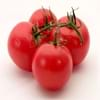Health Benefits
Cancer prevention, Supports healthy Liver function, Diarrhea treatment, Heart care, Increases metabolic rate, Neutralizes irritable bowel syndrome, Helps Prevent cataract, Prevents constipation, Prevents gall stones, Prevents high blood pressure, Helps prevent Parkinson's disease, Reduces risk of asthma, Treatment of alzheimer's disease
Cancer prevention, Controls blood pressure, Heart care, Increase in haemoglobin, Prevents constipation, Prevents macular degeneration, Reduces nervous tension
General Benefits
Boosts immune system, Helps in weight loss, Maintains healthy cholesterol level, Whitens teeth
Controls blood pressure, Helps in weight loss, Maintains healthy cholesterol level, Strengthens bones
Skin Benefits
Anti-aging benefits, Brightens and lightens complexion, Hydrates skin, Treatment of acne, Treatment of dark spots, Treatment of puffy eyes
Brightens and lightens complexion, Hydrates skin, Skin rejuvenation, Treatment of acne
Hair Benefits
Prevents hair loss, Promotes longer and healthier hair, Regulates hair growth, Treatment of dandruff
Good conditioner, Regulates hair growth, Softening mask
Allergy Symptoms
Abdominal pains, Itching, Swelling of mouth, tongue or lips, Vomiting
Abdominal pains, Anaphylaxis, Coughing, Headaches, Hives, Itching, Nasal congestion, Skin rash, Sneezing, Sore throat, Swelling of hands
Side Effects
Allergic reaction, May consist of poisonous seeds
Allergic reaction, Skin rash, Possibly unsafe during pregnancy
Best Time to Eat
Any time except an hour after meal, Best if taken as a breakfast (or empty stomach), Don't consume at night and before bed
Best if taken as a breakfast (or empty stomach), Don't consume at night and before bed, Morning time (before lunch)
Vitamin B5 (Pantothenic Acid)
Vitamin C (Ascorbic Acid)
Vitamin K (Phyllochinone)
Calories in Fresh Fruit with Peel
Calories in Fresh Fruit without Peel
Not Available
Type
Tree fruit
Tree fruit
Season
All seasons
Summer, Winter
Varieties
Red Delicious, Golden Delicious, Gala, Fuji, Granny Smith, Arkansas Black, Sampion, Pink Lady, Cameo, Jonagold, Mc Intosh, Ananasrenette, Lobo, Pacific Rose, Yellow transparent and Bramley
Abyad, Adriatic, Alma, Atreano, Bataglia, Black Bethlehem, Black Madeira, Black Mission, Brown Turkey, Sierra, Calimyrna, Kadota, Deanna, Figoin and Hardy Chicago Fig
Color
Green, Red, Yellow
Green, Purple, Red
Taste
Sweet, Sweet-Sour
Sweet
Origin
Central Asia, Middle East Asia
Western Asia
Soil Type
Loam
Clay, Limestone, Loam, Sandy
Climatic Conditions
Cold
Dry, Warm
Facts about
- Apples can be as small as a pea and as big as a pumpkin.
- There are more than 8000 varieties of apples.
- Life of an Apple tree can be more than 100 years.
- Apples contain 25% air, therefore they float in water.
- Fig tree is considered as a symbol of abundance, fertility and sweetness.
- The fig is made up of 55% of natural sugar so they are the sweetest fruits.
- Figs are used as a fat substitute in recipes.
Top Producer
China
Turkey
Other Countries
Chile, France, India, Iran, Italy, Poland, Russia, Turkey, United States of America
Albania, Algeria, Brazil, Egypt, Iran, Morocco, Syria, Tunisia, United States of America
Top Importer
Russia
France
Top Exporter
China
Turkey
Botanical Name
Malus Domestica
Ficus carica
Synonym
Malus Communis or Malus Pumila or Pyrus Malus
Not Available
Subkingdom
Tracheobionta
Tracheobionta
Division
Magnoliophyta
Magnoliophyta
Class
Magnoliopsida
Magnoliopsida
Subclass
Rosidae
Alismidae
Species
M. domestica
Ficus carica
Generic Group
Rose
Mulberry
Compare Apple and Fig
It is important compare Apple and Fig as both the fruits have a different nutritional value. Their comparison can be done on the basis of their vitamin and mineral content, calories, benefits as well as characteristics, making it easier for us to choose the best fruit for our diet. Their general health benefits are as follows:
Apple Benefits: boosts immune system, helps in weight loss, maintains healthy cholesterol level and whitens teeth.
Fig Benefits: controls blood pressure, helps in weight loss, maintains healthy cholesterol level and strengthens bones.
Fruits are also used as a remedy for various hair problems. The hair benefits of Apple are: prevents hair loss, promotes longer and healthier hair, regulates hair growth and treatment of dandruff and hair benefits of Fig are: good conditioner, regulates hair growth and softening mask. Some fruits are known to cause allergic reactions. The allergy symptoms of first fruit are: abdominal pains, itching, swelling of mouth tongue or lips and vomiting and the symptoms of second fruit are: abdominal pains, anaphylaxis, coughing, headaches, hives, itching, nasal congestion, skin rash, sneezing, sore throat and swelling of hands. Get sorted Apple vs Fig comparison with the help of fruit comparison tool by fruitvs.com.

